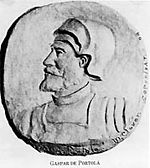Piru, California
1887 establishments in CaliforniaAll pages needing cleanupCensus-designated places in CaliforniaCensus-designated places in Ventura County, CaliforniaHistory of Ventura County, California ... and 3 more
Pages including recorded pronunciationsPopulated places established in 1887Use mdy dates from January 2021

Piru ( ) is a small unincorporated historic town located in eastern Ventura County, California, in the Santa Clara River Valley near the Santa Clara River and Highway 126, about seven miles (11 km) east of Fillmore and about 13 miles (21 km) west of Interstate 5. Lake Piru, in the Los Padres National Forest, is the main recreational attraction. The population was 2,063 at the 2010 census, up from 1,196 when the 2000 census was enumerated. For statistical purposes, the United States Census Bureau has defined Piru as a census-designated place (CDP), which does not precisely correspond to the historical community.
Excerpt from the Wikipedia article Piru, California (License: CC BY-SA 3.0, Authors, Images).Piru, California
Pacific Avenue,
Geographical coordinates (GPS) Address Nearby Places Show on map
Geographical coordinates (GPS)
| Latitude | Longitude |
|---|---|
| N 34.407222222222 ° | E -118.79972222222 ° |
Address
Pacific Avenue
Pacific Avenue
93040
California, United States
Open on Google Maps







